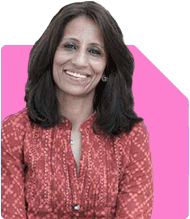Ramalingam Kalirajan |10878 Answers |Ask -Follow
Mutual Funds, Financial Planning Expert - Answered on Jun 04, 2024
He has an MBA in finance from the University of Madras and is a certified financial planner.
He is the director and chief financial planner at Holistic Investment, a Chennai-based firm that offers financial planning and wealth management advice.... more

Hi Me and my wife are 30 & 29. We are looking to retire by 40 with 20 crores while also planning for our future kids. We have no kids right now. Current sip is 55k per month in large cap - 50%, mid cap- 25% and small cap 25%. I currently have 1 Flat, loan free whose rent will be given to my mother. Currently I am paying 20k to her per month. I have taken 1 more home loan of about 1.7cr in an under-construction property with emi 1.25. My wife has other home loan of 18 lacs in her hometown with emi of 36k. I earn 4.3l a month while my wife earns 2l pr month. Also our jobs in software industry is not stable. We also get RSUs but currently I am not counting that. How to plan this?
Your goal to retire by 40 with Rs 20 crores is ambitious and achievable with strategic planning. At 30 and 29, you and your wife have time on your side, which is an advantage. Let's dive into the details of your current financial situation and then outline a comprehensive plan to help you achieve your goals.
Income and Expenses
You have a combined monthly income of Rs 6.3 lakhs. Your current SIP contribution is Rs 55,000, divided into large cap (50%), mid cap (25%), and small cap (25%) funds. You have a property that is loan-free, and the rent from this property goes to your mother. Additionally, you pay your mother Rs 20,000 per month.
Debt Obligations
You have a significant home loan of Rs 1.7 crores with an EMI of Rs 1.25 lakhs for an under-construction property. Your wife has a home loan of Rs 18 lakhs with an EMI of Rs 36,000. These are substantial monthly obligations that need careful management.
Future Goals and Responsibilities
You plan to retire in 10 years with Rs 20 crores and also plan for your future children. Given the instability in the software industry, it’s crucial to build a robust financial plan that accommodates potential job changes or disruptions.
Compliments and Empathy
Your commitment to planning for your financial future is commendable. It’s clear you have a disciplined approach to savings and investment, which is essential for reaching your goals. Your thoughtful consideration of your family’s needs, such as supporting your mother and planning for future children, reflects your responsible and caring nature.
Detailed Financial Planning Strategy
1. Analyzing Current Investments
Your SIP allocation is balanced with a focus on growth. Large cap funds provide stability, mid cap funds offer growth potential, and small cap funds add a high-growth element, albeit with higher risk. Continue this diversified approach but review and adjust periodically based on market conditions and fund performance.
2. Emergency Fund
Ensure you have an emergency fund that covers 6-12 months of living expenses. This fund should be easily accessible and kept in a liquid form like a savings account or a liquid mutual fund. This will provide a safety net in case of job loss or other financial emergencies.
3. Home Loan Management
Your current home loan EMIs are substantial. Aim to pay off the smaller loan (Rs 18 lakhs) first, as it will free up Rs 36,000 per month, which can then be redirected towards your investments or the larger home loan. For the Rs 1.7 crore loan, consider making prepayments whenever possible to reduce the principal and interest burden over time.
4. Increase SIP Contributions
With your combined income, there is potential to increase your SIP contributions. Aim to gradually increase your SIP amount by 10-15% annually. This will significantly boost your corpus over the next 10 years. Prioritize large and mid cap funds as they offer a balance of stability and growth.
5. Tax Planning
Utilize tax-saving investment options under Section 80C to reduce your taxable income. Investments in ELSS (Equity Linked Savings Scheme) funds can provide tax benefits while offering equity exposure. Also, consider using the National Pension System (NPS) for additional tax benefits under Section 80CCD(1B).
6. Planning for Children
Start a dedicated investment plan for your future children. Child education plans or a separate SIP can ensure you accumulate a substantial corpus by the time your children need it. This will help in managing future educational expenses without straining your retirement corpus.
7. Retirement Corpus Calculation
To accumulate Rs 20 crores in 10 years, calculate the monthly investment required using a financial calculator. Assuming an annual return of 12% from your SIPs, you will need to invest approximately Rs 2.3 lakhs per month. Adjust your current expenses and income accordingly to meet this goal.
8. Review and Rebalance Portfolio
Regularly review and rebalance your investment portfolio. Monitor the performance of your funds and make necessary adjustments. Rebalancing helps in maintaining the desired asset allocation and managing risk effectively.
9. Avoid Real Estate Investments
Given your existing real estate commitments, focus on other investment avenues. Real estate requires significant capital and is less liquid. Stick to equity and debt investments which provide better liquidity and potential for higher returns.
10. RSUs and Bonuses
Utilize RSUs and bonuses effectively. Consider them as additional investment opportunities rather than immediate spending. Invest these amounts in your existing SIPs or use them for loan prepayments.
11. Insurance Planning
Ensure you have adequate life and health insurance. A term life insurance policy covering at least 10-15 times your annual income is crucial. Health insurance for you and your family should cover major medical expenses and critical illnesses.
12. Consulting a Certified Financial Planner
A Certified Financial Planner (CFP) can provide personalized advice tailored to your specific needs. They can help you navigate complex financial decisions and ensure you are on track to meet your goals. Regular consultations with a CFP will help in fine-tuning your financial plan.
13. Benefits of Actively Managed Funds
Actively managed funds, with the guidance of a Mutual Fund Distributor (MFD) and CFP, offer professional management and the potential for higher returns compared to direct funds. They can adapt to market conditions and provide better risk management.
14. Avoiding Index Funds
Index funds, while low-cost, often mirror the market and may not provide the same growth potential as actively managed funds. Active fund managers can outperform the market, offering better returns, especially in the Indian market where active management can capitalize on market inefficiencies.
15. Regular Funds Over Direct Funds
Investing through regular funds with an MFD and CFP provides the benefit of professional advice and regular portfolio reviews. While direct funds have lower expense ratios, they lack the personalized guidance that can optimize your investment strategy and ensure alignment with your financial goals.
16. Regular Savings and Expense Management
Maintain a disciplined approach to saving and managing expenses. Track your spending and identify areas where you can cut back. Redirect these savings towards your investment goals.
17. Long-Term Focus and Patience
Achieving Rs 20 crores in 10 years requires a long-term focus and patience. Market fluctuations are normal, and staying invested through ups and downs is crucial. Avoid making impulsive decisions based on short-term market movements.
18. Diversification Across Asset Classes
Diversify your investments across different asset classes, including equity, debt, and gold. This reduces risk and enhances the potential for returns. Each asset class performs differently under various market conditions, providing stability to your portfolio.
19. Tracking Progress and Making Adjustments
Regularly track your financial progress. Use financial planning tools and software to monitor your investments and net worth. Make adjustments based on changes in your financial situation, goals, and market conditions.
20. Staying Informed and Educated
Stay informed about financial markets and investment opportunities. Educate yourself about different investment options and strategies. Knowledge empowers you to make better financial decisions and stay on track to achieve your goals.
Conclusion
Your goal of retiring by 40 with Rs 20 crores is challenging yet achievable with disciplined planning and execution. Focus on increasing your SIP contributions, managing your debt effectively, and staying diversified. Regular reviews and consultations with a Certified Financial Planner will ensure you stay on track. By following this comprehensive plan, you can achieve financial freedom and secure a prosperous future for your family.
Best Regards,
K. Ramalingam, MBA, CFP,
Chief Financial Planner,
www.holisticinvestment.in
You may like to see similar questions and answers below
Ramalingam Kalirajan |10878 Answers |Ask -Follow
Mutual Funds, Financial Planning Expert - Answered on Jun 25, 2024
Ramalingam Kalirajan |10878 Answers |Ask -Follow
Mutual Funds, Financial Planning Expert - Answered on Jun 02, 2025
Ramalingam Kalirajan |10878 Answers |Ask -Follow
Mutual Funds, Financial Planning Expert - Answered on Jun 04, 2025
Ramalingam Kalirajan |10878 Answers |Ask -Follow
Mutual Funds, Financial Planning Expert - Answered on Aug 02, 2025
Mayank Chandel |2570 Answers |Ask -Follow
IIT-JEE, NEET-UG, SAT, CLAT, CA, CS Exam Expert - Answered on Dec 10, 2025
Samraat Jadhav |2503 Answers |Ask -Follow
Stock Market Expert - Answered on Dec 10, 2025
Radheshyam Zanwar |6741 Answers |Ask -Follow
MHT-CET, IIT-JEE, NEET-UG Expert - Answered on Dec 10, 2025
Ramalingam Kalirajan |10878 Answers |Ask -Follow
Mutual Funds, Financial Planning Expert - Answered on Dec 10, 2025
Ramalingam Kalirajan |10878 Answers |Ask -Follow
Mutual Funds, Financial Planning Expert - Answered on Dec 10, 2025
Samraat Jadhav |2503 Answers |Ask -Follow
Stock Market Expert - Answered on Dec 10, 2025
Samraat Jadhav |2503 Answers |Ask -Follow
Stock Market Expert - Answered on Dec 10, 2025
Samraat Jadhav |2503 Answers |Ask -Follow
Stock Market Expert - Answered on Dec 10, 2025
Shalini Singh |180 Answers |Ask -Follow
Dating Coach - Answered on Dec 10, 2025
Radheshyam Zanwar |6741 Answers |Ask -Follow
MHT-CET, IIT-JEE, NEET-UG Expert - Answered on Dec 09, 2025
























